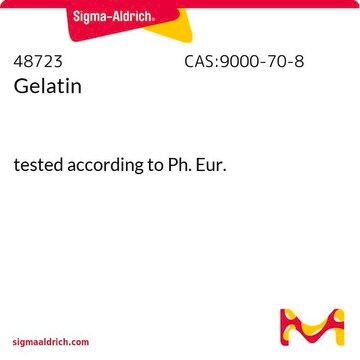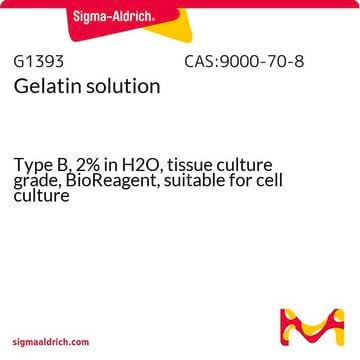The molecular weight of this product has not been evaluated, However, the molecular weight is closely related to the Bloom Number. The estimated ranges are as follows:
Bloom Number Average Molecular Mass (Da)
50−125 (Low Bloom) 20,000−25,000
175−225 (Medium Bloom) 40,000−50,000
225−325 (High Bloom) 50,000−100,000
Please see the link below to review the general datasheet for Gelatin:
https://www.sigmaaldrich.com/deepweb/assets/sigmaaldrich/product/documents/333/625/g9382pis.pdf











